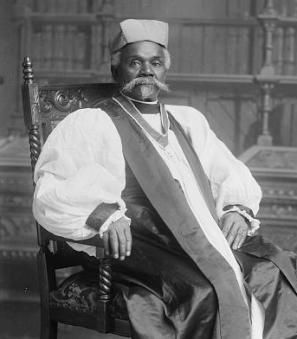"Leapfrogged by Time": A Memorial to a Forgotten War
If asked to name one of the many memorials near the National Mall, the typical D.C. tourist would likely first turn to the Washington Monument or the Jefferson Memorial, or perhaps to the Vietnam Veterans Memorial, the Martin Luther King, Jr., Memorial, or the World War II Memorial. Few think immediately of the Korean War Veterans Memorial, though it is often cited by local tourism groups as a must-see.
This is due in no small part to the fact that the memorial remembers a war that, itself, has been overshadowed by other conflicts. Fought between 1950 and 1953, the Korean War began when the communist North Korean army crossed the 38th Parallel and invaded South Korea. The U.S. sent forces to aid the South, while other UN allies contributed troops and supplies.[1] [2] [3] China and the Soviet Union provided support for North Korea as the Cold War grew hot.[4] After three years of fighting – and no conclusive winner – an armistice ended the war on July 27, 1953.
The stalemate and the nation’s collective fatigue after the end of World War II likely played a role in how Korea was – or wasn’t – remembered. As veteran and Washington Post writer Bill Gilbert termed it, Korea was “World War Two and a Half,”[5] often hidden in the shadow of its predecessor. Though popular opinion agreed that Communism could not be allowed to spread, the war still became “deeply unpopular and vastly demoralizing for the American home front.”[6] In the years immediately following the armistice, Americans grappled with how to remember the conflict. Some, such as Falls Church resident G. Holcomb, advocated for a memorial; he wrote in a letter to the editor of The Washington Post in 1955:
“Each day I admire the altogether fitting and proper memorial statue honoring the courageous lads of America who planted the flag on Iwo Jima during World War II. Now I'm wondering if there is a memorial somewhere for the equally courageous boys of the United Nations who fought under many flags, including our own and that of the United Nations, to stop the aggression of the North Korean and Red China Communists on the Korean Peninsula…. Men of all races and creeds died for freedom there. Should there not be a monument showing the heterogeneous qualities of those united forces? Would not that serve to remind us and others that even the ‘little wars’ against free people (or even against unfree people) are important today?”[7]
However, no memorial was forthcoming – at least, not any time soon. It would take 30 years – and the dedication of the Vietnam Veterans Memorial – for any real traction to build towards developing a monument for the war in Korea.
The 1980s – the thirtieth anniversary of the war – saw a slow, but perceptible, change in public opinion. Pieces such as Bill Gilbert’s called attention to what people were starting to call the ‘forgotten war.’[8] Two separate interest groups formed after a group of veterans made a diplomatic visit to Seoul in 1985.[9] The Korean War Veterans Memorial Association, headed by General Richard Stilwell, made it their goal to lobby for a national memorial, while the Korean War Veterans Association, formed by William T. Norris, began working to advocate for veterans. In the meantime, plans for a memorial in Baltimore[10] prompted bills in the House and Senate for the construction of a monument on the Mall.
Such a sudden flood of interest seemed like a good omen, but there were issues from the outset, starting with the proposed location for the memorial. The National Capital Memorial Commission recommended a site in Ash Woods (the wooded area across from the Lincoln Memorial), which was not the Korean War Veterans Memorial Association’s first choice. Calling himself “somewhat unhappy,” General Stilwell expressed disappointment that the memorial would be near the stable where the National Park Service kept horses; the site he would have preferred was slated to hold a restaurant.[11] Multiple agencies became attached to the project, including the American Battle Monuments Commission (AMBC) and the National Park Service, but friction and frustrations grew between them.
Additionally, fundraising proved more difficult than expected. In spite of a large number of veterans sending their own money, the memorial’s costs ballooned from an initial estimate of $6 million[12] to around $18 million.[13] [14] Organizers tried various tacts to make up the shortfall, including a $1,000-a-plate gala hosted by Bob Hope[15] and commissioning a commemorative coin that could be sold to collectors. Though the coin eventually hit the trade market, it had its detractors, who cited the high costs of production and the low estimate of interested buyers. [16] [17]
By far, however, the largest roadblock was the design itself. The process of deciding the memorial’s shape and size took nearly as long as the war itself. A dozen Korean War veterans were appointed by the President in 1986 to form an advisory board, and were to assist the ABMC and the Army Corps of Engineers in selecting the memorial’s ‘look.’[18] They put out a national call for submissions, and ultimately selected a design submitted by a team of four Penn State faculty members: Eliza Pennypacker Oberholtzer, and three colleagues – Don Alvaro Leon, Veronica Burns Lucas, and John Paul Lucas – who made up the architectural firm BL3.[19]
The original concept called for a memorial that would stretch over two acres. It would hold 38 statues, each between 7 and 8 feet tall, and there would be a large plaza with a long strip of red granite running towards a central flagpole. Trees and plants would suggest a hostile landscape. A seven-foot wall to the west would be inscribed and have bas-relief sculptures showing a timeline of the war. The memorial would be shielded to the south by high hedges, and to the north by dogwood and sycamore trees.
Opposition to their proposal was almost immediate. The inclusion of a wall raised objections of heavy-handed borrowing from Maya Lin’s design for the Vietnam Veterans Memorial.[20] A number of female veterans objected to the fact that the statues were all male (General Stilwell responded that women would be included in other ways).[21] Some critics pointed to the small size of the location in Ash Woods, saying that the design would overwhelm the space. Others felt the style didn’t fit with the other memorials in the immediate surrounding area.[22]
Despite these complaints, the process moved forward. The task of actually constructing the memorial was given to a Washington firm, Cooper-Lecky Architects, who had also been involved in the building of the Vietnam Veterans Memorial. After visits to Ash Woods, Cooper-Lecky began to alter the plans. The original concept of a platoon of soldiers on patrol was changed to be soldiers who would appear ready to fight. The wall would be enlarged,[23] and the plaza was to shift to include a mural.[24] The 38 statues – an allusion to the 38th Parallel and to the 38 month duration of the war – were halved to 19.[25]
But such huge alterations didn’t sit well with the original designers from BL3. Months of meetings yielded nothing but a heated, prolonged court battle as the firms challenged each other over design, intent, and execution.[26] [27] While General Stilwell’s opinion was that Cooper-Lecky’s changes made the memorial “dynamic,”[28] BL3 accused the other firm of breach of contract and of making changes that would glorify war. They also raised questions about the sincerity of the original proposal process, asking what its purpose had been if the design was to be so dramatically changed.[29]
The road to completion took over half a decade, to the dismay of veterans, who felt increasingly cheated as the process dragged on with no end in sight.[30] BL3 left the project, while Cooper-Lecky faced a variety of issues as they looked for a sculptor to design and fabricate the statues, as well as a muralist.[31] The idea of a mural that incorporated bas-reliefs was eventually discarded as overwhelming the rest of the memorial’s design.[32] There was also concern over how to design the statues. The aim was to portray common soldiers[33], but to use real veterans as models presented legal issues. Conversely, statues that looked less than realistic would have an off-putting effect.[34] With such a lengthy list of concerns, it began to look as if the whole design might have to be scrapped, and the process started over from scratch.[35]
Fortunately, that wouldn’t be necessary. After several additional months of arduous debate, as Cooper-Lecky found a model that would fit the space allotted for the memorial and that would please the committees in charge, work crews broke ground in 1992.[36] When the memorial was complete 3 years later, nineteen statues marched in a loose triangle representing an ethnic cross-section of the Armed Forces, as well as the different branches of services. The group is comprised of 14 Army men, 3 Marines, 1 Navy Corpsman, and 1 Air Force air-ground controller.[37] The soldiers – sculpted by Frank Gaylord of Vermont[38] and cast by Tallix Foundries of New York[39] – tread cautiously through scraggly branches of juniper, bordered on one side by a wall listing each of the 22 nations who aided the United States and South Korea, and on the other by a black granite wall bearing laser-etchings of those who served in support positions[40], like doctors, nurses, clerks, drivers, and chaplains. Each face is of a real person, at least one of them local -- Oliver Cramer of Manassas who had served as a U.S. Navy signalman during the war.[41] The sculptures were modeled after archival photographs from the National Archives and the National Air and Space Museum.[42]
All of these elements come together in a point, where an inscription in the ground dedicates the spot to the country’s ‘sons and daughters who answered the call to defend a country they never knew and a people they never met.’ Beyond it is a short wall which reads “Freedom is Not Free,” overlooking a reflecting pool around which visitors can sit on a number of benches and read the ultimate statistics of the war – the dead, the missing, and the wounded.
On July 27, 1995, exactly 42 years after the armistice that ended the war was signed, the Korean War Memorial opened to the public. Approximately 6,000 veterans attended, bringing their families with them. A delegation arrived from South Korea to participate in the dedication[43], including South Korean President Kim Young Sam. Korean-Americans from Annandale and other local communities brought food to pass out to the crowds. A group of war orphans who had been adopted by American families traveled from all over the country to spend the day together.[44]
The day was a scorcher: Veterans Affairs doctors serving in first aid tents became overwhelmed trying to treat five hundred cases of heat exhaustion.[45] Military personnel handed out over 600,000 bottles of water.
Emotions also ran high. John Connolly, a veteran from Sterling, said it was one of the very few times he had ever been recognized. “I’ve been looking forward to this,” he told a Post reporter, “because it’s time people realized how many were killed and wounded.”[46] While Connolly hoped that the ceremony would also raise awareness as to the many civilian deaths the war caused, other veterans were unsure how much good a memorial would really do. Wilfrid Baumann, from New York, told the same reporter that he was skeptical, calling the memorial and ceremony “recognition that Korean War veterans have not received the respect they deserve, but this is not going to correct it.”[47]
The memorial was not quite finished: there was one last piece to finish putting into place, but that would take more time. Heralding “the new wave of monument design that incorporates digitized data,”[48] the memorial had an ‘honor roll’ computer kiosk – the plan was to include “about 35,000 digitized service records of those killed in action,”[49] visitors could scroll through by using a touch screen, though only a fraction was uploaded by opening day.
The amount of national attention focused on the dedication brought a corresponding surge of interest in the war and its history – helped by the repatriation of the bodies of several American GIs[50], the first since the end of the war. Slowly, but more and more surely, the so-called “forgotten war” was reclaiming its place in American memory.
Footnotes
- ^ “Bolivia Offers Troops; Other Aid is Proposed,” Washington Post, July 22, 1950.
- ^ “2000 British Troops May Be Offered,” Washington Post, July 22, 1950.
- ^ “Full Division May Be Sent By Australia,” Washington Post, July 28, 1950.
- ^ “Russians Serve as Advisers with Red Soldiers in Korea,” Washington Post, July 19, 1950.
- ^ Bill Gilbert, “Other Heroes – Without a Washington Memorial,” Washington Post, May, 19, 1985.
- ^ Bruce Cumings, The Korean War: A History, (New York: Modern Library, 2010), page 229.
- ^ G. Holcomb, “Letters to the Editor: Korean War Memorial,” Washington Post, June 15, 1955.
- ^ Nancy Scannell, “Korean Veterans Mark End of ‘Forgotten War,’” Washington Post, July 28, 1985.
- ^ News Services, “Korean War Memorial Moves a Step Forward,” Washington Post, June 15, 1992.
- ^ Tom Stuckey, “Planning Funds Approved for Korean War Memorial,” Washington Post, November 12, 1987.
- ^ Rene M. Lynch, “3 Memorials Approved: Korea Vets, Women, and Blacks Honored,” Washington Post, June 29, 1988.
- ^ Benjamin Forgey, “Saluting the Korean War’s Rank & File,” Washington Post, June 15, 1989.
- ^ Sarah Booth Conroy, “New Revision for Korean Veterans Memorial,” Washington Post, March 6, 1992.
- ^ Anthony Faiola and Lena H. Sun, “Out of History, Onto the Mall,” Washington Post, July 23, 1995.
- ^ Roxanne Roberts, “Thanks and Memories: Bob Hope, President Bush Salute Korea Vets,” Washington Post, May 2, 1990.
- ^ Bill McAllister, “Korean War Coin Woes,” Washington Post, May 3, 1991.
- ^ Kent Jenkins, Jr., “Parris Pushes Korean War Memorial Bill,” Washington Post, October 18, 1990.
- ^ Public Law No, 99-572, 100 Stat. 3226 (October 28, 1986), http://uscode.house.gov/statutes/pl/99/572.pdf, accessed July 6, 2018.
- ^ Benjamin Forgey, “Saluting.”
- ^ Benjamin Forgey, “Like the War Itself, An Unsatisfying Compromise,” Washington Post, January 17, 1992.
- ^ Benjamin Forgey, “Saluting.”
- ^ Roger K. Lewis, “War Memorial Design Symbol of Controversy,” Washington Post, November 17, 1990.
- ^ Benjamin Forgey, “The Korean Controversy,” Washington Post, February 2, 1991.
- ^ Knight-Ridder, “War Memorial Approved, Architects Decry Revisions in Korean Monument,” Washington Post, November 9, 1990.
- ^ Sarah Booth Conroy, “Korean War Memorial Design Fails Again,” Washington Post, October 25, 1991.
- ^ Benjamin Forgey, “More Salvos in Memorial Fight,” Washington Post, December 14, 1990.
- ^ Lucas v. US Army Corps of Engineers, 789 F. Supp. 14, (D.D.C. 1992).
- ^ Knight-Ridder, “War Memorial Approved.”
- ^ Benjamin Forgey, “Architects Sue Over Redesign of Memorial,” Washington Post, December 19, 1990.
- ^ Sarah Booth Conroy, “Korea Memorial Hits New Hurdle,” Washington Post, February 7, 1992.
- ^ Sarah Booth Conroy, “The Korea Memorial’s Slow March,” Washington Post, April 5, 1991.
- ^ Sarah Booth Conroy, “Korea Memorial Design Rejected,” Washington Post, June 29, 1991.
- ^ Louis Nelson, “Remembering the ‘Forgotten War,’” Washington Post, July 23, 1995.
- ^ Benjamin Forgey, “A March to Remember,” Washington Post, July 22, 1995.
- ^ Sarah Booth Conroy, “Arts Panel Stands by Earlier Design Decision,” Washington Post, July 26, 1991.
- ^ “Korean War Memorial Moves a Step Forward,” Washington Post, June 15, 1992.
- ^ The Korean War Veterans Memorial Foundation, “The Memorial,” http://www.koreanwarvetsmemorial.org/the-memorial/, Accessed June 20, 2018.
- ^ Lisa Rathke, “Sculptor of Korean War Memorial Soldiers Dies at 93,” U. S. News, March 29, 2018.
- ^ The Korean War Veterans Memorial Foundation, “The Memorial.”
- ^ “Remembering America’s Forgotten War: A Tribute to Korean War Veterans,” Washington Post, July 25, 1995.
- ^ Carol Morello, “Veteran’s Korean War Service Etched in History,” Washington Post, October 14, 2000.
- ^ Louis Nelson, “Remembering.”
- ^ Lena H. Sun, “Veterans of ‘Forgotten War’ Get Their Memorial,” Washington Post, July 28, 1995.
- ^ Steve Vogel and William Branigin, “The War They Can’t Forget,” Washington Post, June 26, 2000.
- ^ Ibid.
- ^ Ibid.
- ^ Ibid.
- ^ Kevin McManus, “A Touching Memorial,” Washington Post, July 26, 1995.
- ^ Ibid.
- ^ Bill McAllister, “After 39 Years, Soldiers Coming Home,” Washington Post, May 26, 1990.


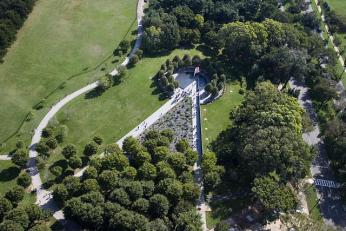
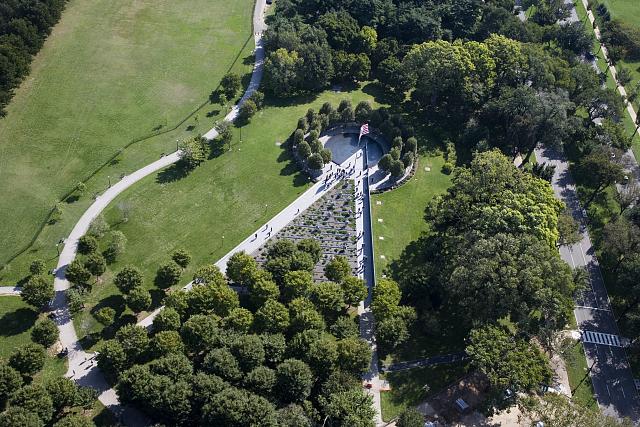
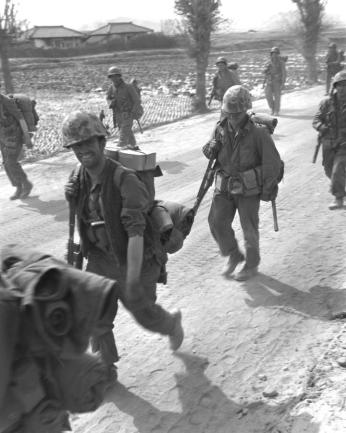
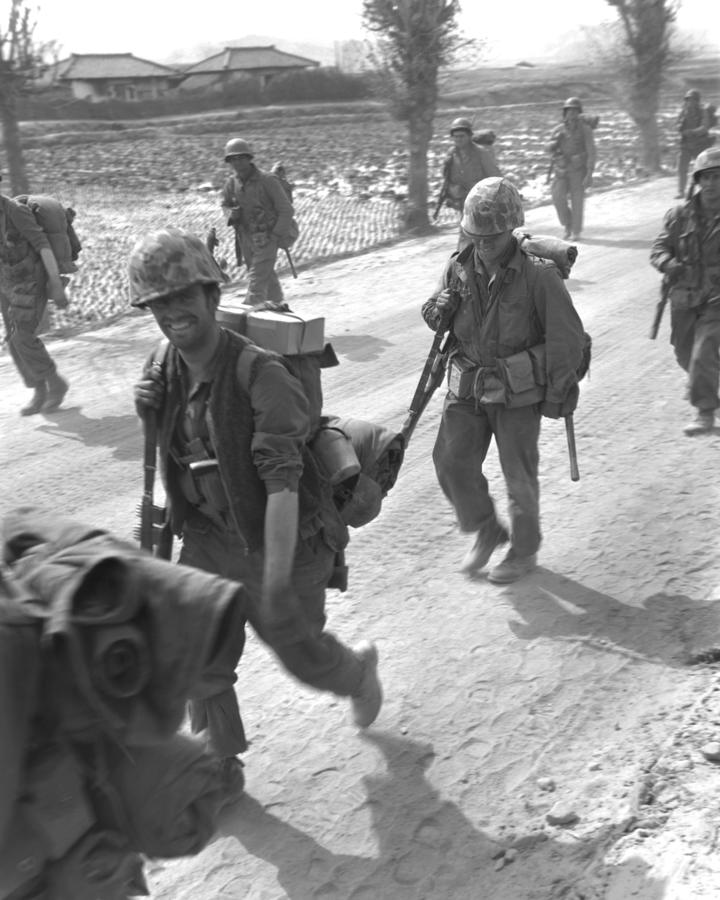
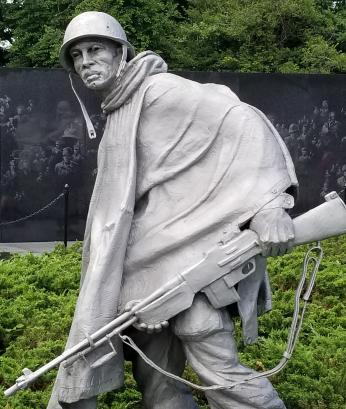
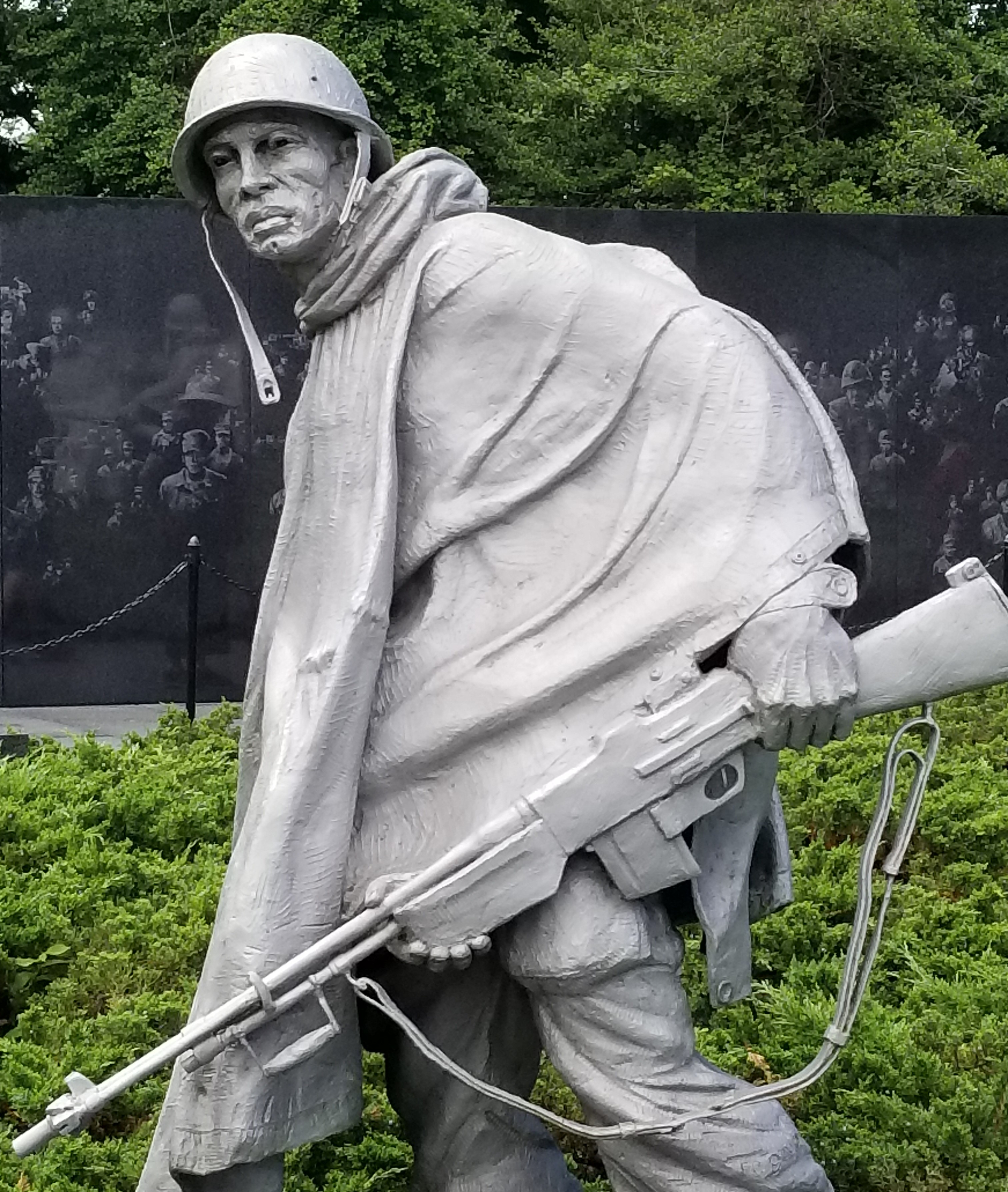
![This integrated classroom at Anacostia High School is the culmination of a seven year struggle against DC's segregated school system. [Source: LOC] Integrated classroom at Anacostia High School](/sites/default/files/styles/crop_320x320/public/AHS%20Class_0.jpg?itok=GNxSJFox)
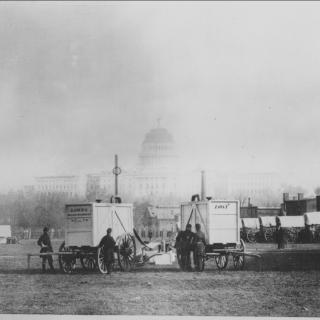
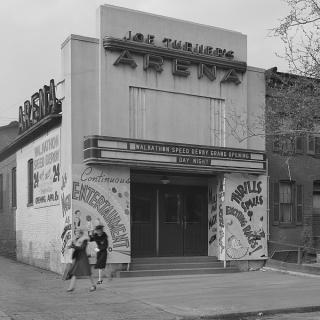
![Sketch of the mythical fuan by Pearson Scott Foresman. [Source: Wikipedia]](/sites/default/files/styles/crop_320x320/public/2023-10/Goatman_Wikipedia_Faun_2_%28PSF%29.png?h=64a074ff&itok=C9Qh-PE1)











